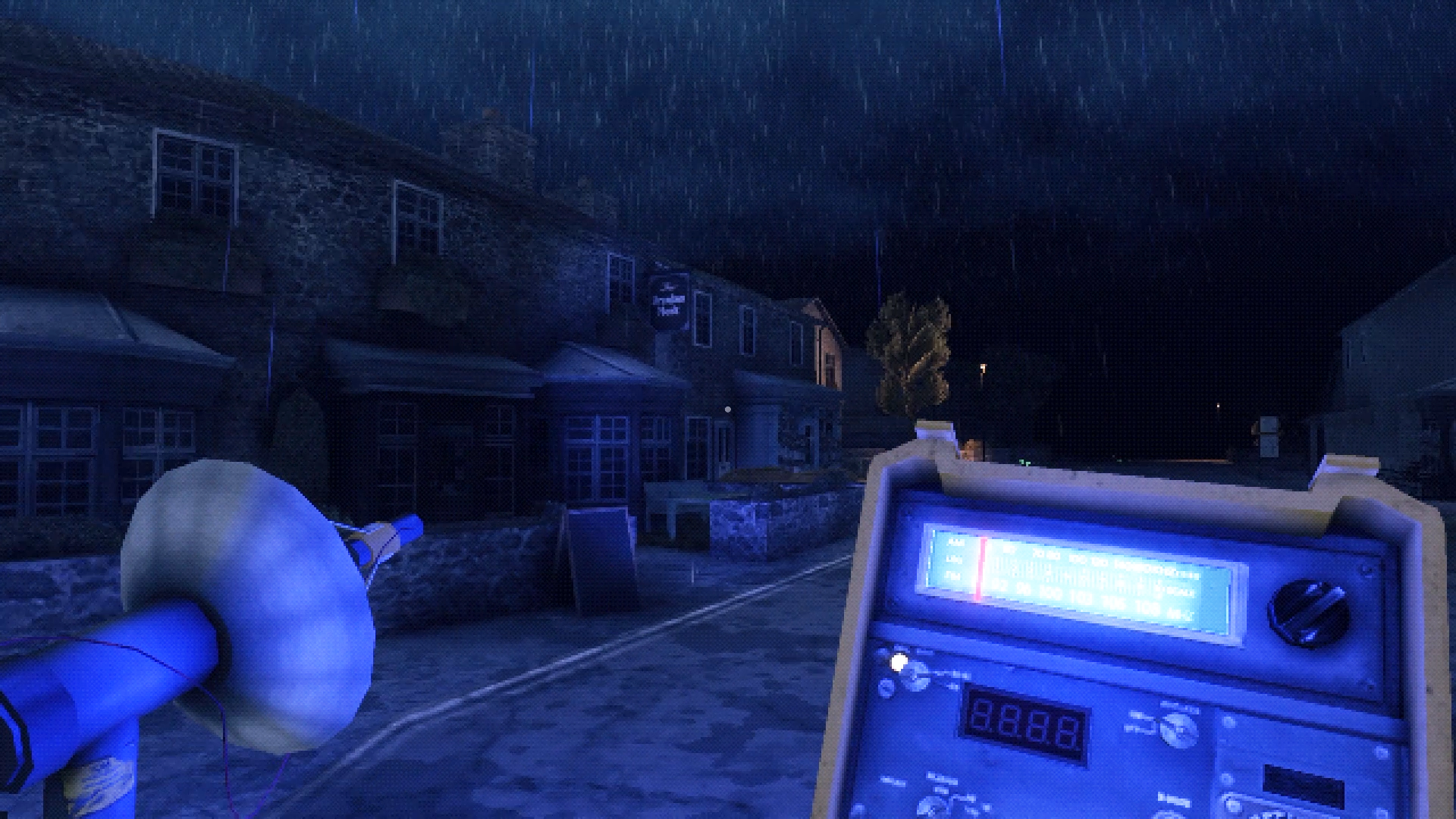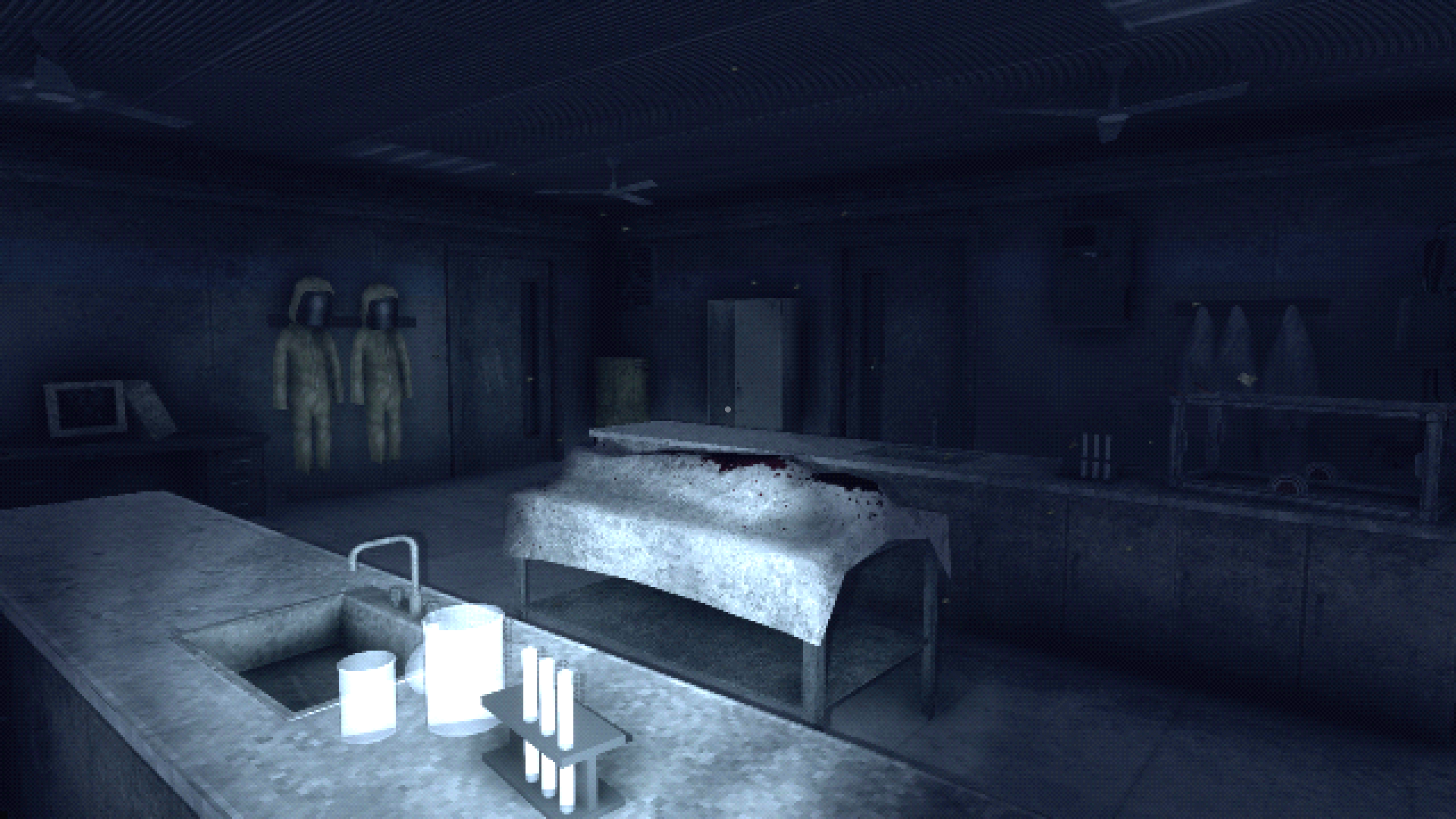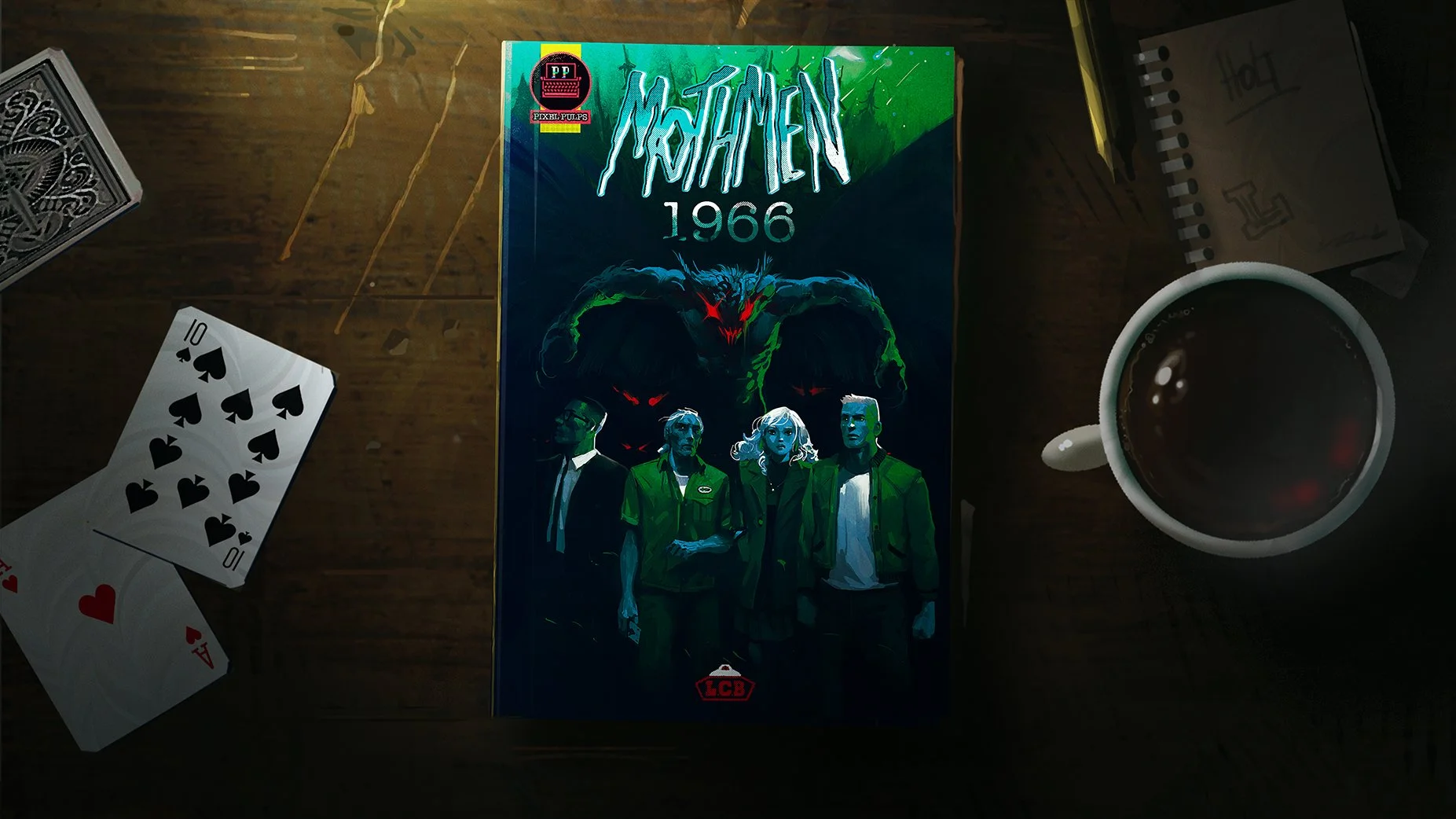Review | Chasing Static - Escape To The Countryside [Pumpkin Spice 2021]
“It was late in the day, somewhere in North Wales, and I was hunting down an escaped noise, a signal, with a lighter and some hi-tech radio equipment. I was pointing the receiver everywhere, waiting to pick up a trace of the terrible sound, the one that, the one that made the people do those things... I can still see the traces of them now, like black and white ghosts overlayed onto my vision… Oh God! no…” From the pages of Oma Keeling’s ‘What I did on my Holidays’.
Excuse me, hello. Have you seen Oma?
I was Chasing Static, or playing it at least, the first-person horror adventure from small Bristol-based indie studio Headware Games. Set in a haunted piece of land somewhere on the borders of Wales and England, the game takes you, Chris, on a journey after the burial of your father, into the midst of the terrible anomalous lab outbreak that he was involved in. Lost on backroads, Chris ends up at the 'Last Stop Cafe'. From there, after some nervous-laughter filled banter with the owner, things go haywire, the fuses blow and cue your entry into a dark world where neither technology nor time can be relied upon.
I really hope I didn’t just find Oma…
Chasing Static is a period piece set in the late 90s, with low-poly stylings and visual glitches to boot, the game then revolves around using tools, from shovels to cassette decks, to help the unwitting Chris find his way out of this horrible, anomaly filled version of the lakeside forest region. I willingly bought into the premise of a hellish facility beneath lush green fields, the setting evoking the feeling of having discovered forbidden military grounds via signs reading 'Firing Range Ahead' while walking in the British countryside.
In terms of style, this is one of the best-designed indie exploration games I’ve seen recently, an intricately detailed yet low-poly PS1-esque world where each space is full of story, from the back of a Transit van in a tiny village, to the body bags in dank corners of storage deep underground. The retro look is impressive and feels entirely in step with the game's time period in a way I'd not considered as a reason for low-fi visuals. In homage to the likes of Resident Evil it also comes with a save mechanism that makes use of a key piece of 20th-century tech, the Polaroid camera.
The real horror is being stuck in the rural UK.
- Signed an Irish editor.
For the first hour or so I wasn’t feeling the specific vibe of British countryside at night though, something in the kinds of hedges, the damp trees and the light was missing, and it wasn't until a certain abandoned cottage in a valley by the lake that I was actually transported to rural Wales. This is a small, personal gripe however, with what is a fully engaging and creepy set of locations pockmarked with audio distortions, including a dark, twisting underground bunker where the game lets you in on its main gameplay and connects you with Helen, a scientist trapped in the main lab, who has you travel between haunted sites to shut down the ‘echoes’ with radio equipment.
While very dimly lit at parts there is a brightness boost available, with a disparity of less effect underground, and subtitles for dialogue, though these are stylised with a gradient which makes them harder to read than other game text. In terms of further accessibility, the sounds you need to track in the game are helpfully indicated with a visual display of their intensity on the tracking machine. However, since even the studio logo is visually distorted, the game definitely requires a seizure warning, and could do with the ability to remap its controls, toggleable move and run options, and other ways to adapt the look of the visual field.
OK GANG LET’S SPLIT UP AND LOOK FOR CLUES!
My core feeling about the game as a horror experience is that for the tone it adopts, which is heavily sombre and atmospheric, the scares it provides to go along with that are unfortunately few and far between. This is not to say that horror games should always be about making you lose your composure and hide from the screen, but in terms of bodily reaction, the most I was gripped was when I inadvertently triggered an automatic door well into the final act. It is, in the sense of a lot of British horror, more of a ‘thinker’ and more about ghosts and science fiction in the way it unfolds, blending Victorian gothic spiritual culture with sci-fi tv tropes. Just as those horror cultures are about types of British morality, Chasing Static becomes increasingly sentimental as it moves towards a major twist ending and you realise that the set-up of a 'sins of the father' story isn't going to go anywhere too innovative. While there are variations on the ending, according to the post-credits, the major plot left me cold.
There are genuinely unsettling and morbid moments along the way, and most of them occur as you hunt for the errant signals, finding out what was done to the workers that tried to contain the anomalies before you via static induced flashbacks. These, which also mean you’re a step removed from the danger, then can make parts of the past they show you present to help you unlock doors as you go. The place that those doors try to lead you to however is somewhere that if you like horror, and you like games, you've most certainly been taken to before. It's also one where the overriding nonplussed Englishness of Chris, who engages with most of the world as if he's just missed the bus, made for a moment of being asked to care about major revelations that didn't feel emotionally earned or all that surprising.
Aye, we call this the Mario’s grave yard. Its where Nintendo take all the computers they find emulating their software when they are done with ‘em.
While I was let down by what felt like a hasty search for a heart, I definitely had fun exploring as the game led me along, and the tools you use to follow the escaped signals make for some great retro ghostbusting tension, heightened by a keyboard synth-heavy score that paces and stretches itself according to the suspense. While visually excellent and fun to explore, Chasing Static is a game that I wished had leaned into something full throttle, gone for something gonzo and truly experimental, (the ancient folk horror traditions of the UK are right there). Instead, it mainly sticks to recycling an accumulated knowledge of ghosts, Doctor Who plots and watered down psychological horror.
I would definitely recommend Chasing Static to anyone who wants a short, visually exciting horror adventure that isn't too scary, with the caveat that it never really catches up fully with its ambition.

![Review | Chasing Static - Escape To The Countryside [Pumpkin Spice 2021]](https://images.squarespace-cdn.com/content/v1/5caf2dea93a63238c9069ba4/1634584671352-68DKTJVLD2YH94IK2J2K/chaising+static+0.png)






![Review | A Juggler's Tale - There Are No Strings on Me [Pumpkin Spice 2021]](https://images.squarespace-cdn.com/content/v1/5caf2dea93a63238c9069ba4/1634216368514-8XELF6ZDGL6H64XO3GJT/juggler%27s+0.jpg)

